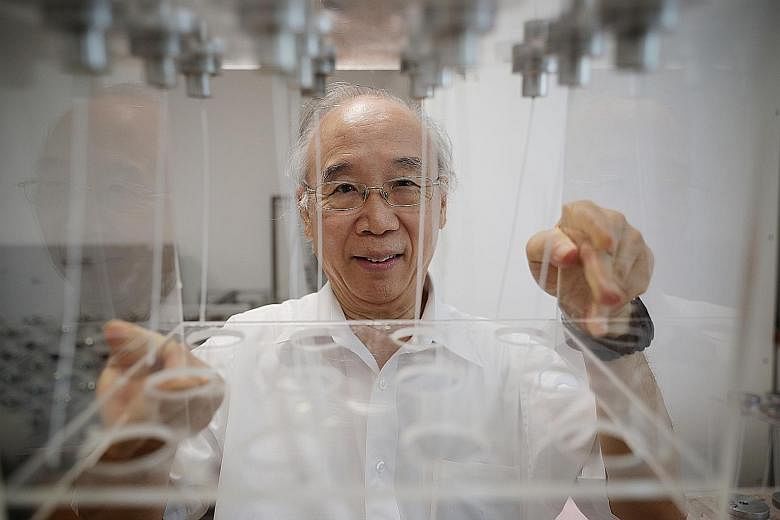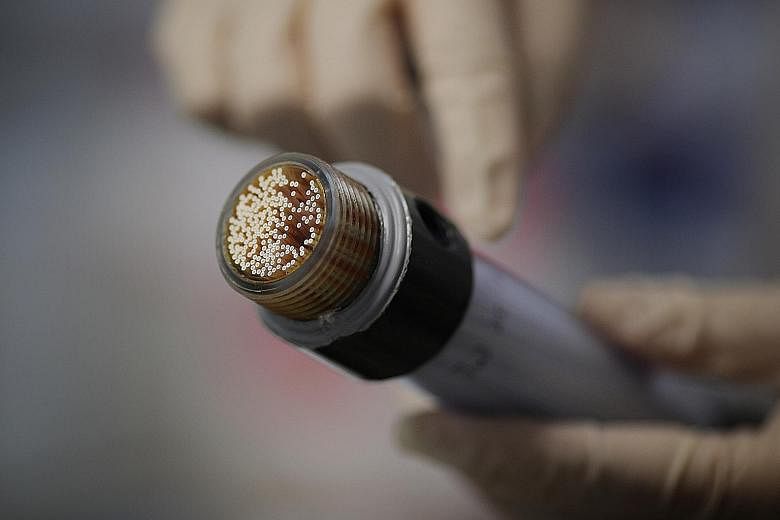Singapore is leveraging the technology it uses to overcome its water woes to try and fix another problem: climate change.
Membrane technology - used to turn sewage into Newater and seawater into drinkable water - is now being improved on to separate carbon dioxide gas from the emissions of power plants here.
Filtering carbon dioxide from flue gas in Singapore will be a crucial component in a carbon capture, utilisation and storage (CCUS) system, said membrane expert and research lead Neal Chung, a Provost's Chair Professor at the Department of Chemical and Biomolecular Engineering at the National University of Singapore.
Carbon capture systems, as the name suggests, are designed to capture planet-warming carbon dioxide gas produced during the burning of fossil fuels, so it can be stored underground or converted into other useful substances, like concrete.
It is still early days for such systems, which are not yet commercially viable on a large scale.
Research into this area is gaining traction worldwide as nations - including Singapore - seek to lower their carbon footprint to avoid the harshest impacts of climate change.
Singapore burns natural gas, which is cleaner than other fossil fuels like oil or coal, for energy.
Prof Chung estimates that the proportion of carbon dioxide in flue gas here could be as low as about 5 per cent.
For coal-fired plants, CO2 concentration in flue gas could be between 7 and 14 per cent, according to a 2014 paper in the scientific journal Renewable and Sustainable Energy Reviews.
Such low concentrations of CO2 in emissions make it expensive and challenging to capture CO2 for subsequent conversion or storage, he said.
Gases usually move from areas of high concentration to areas of low concentration through diffusion. So low concentration levels would mean lots of energy is required to separate or capture the gas for other applications.
But developing a membrane that can separate CO2 from the flue gas would mean it can be captured and concentrated, and converted into other products such as methanol, said Prof Chung.
Developing membranes for separating gases is far more challenging than separating liquids because gaseous particles are far smaller, he told The Straits Times.
"Controlling the pore size of a membrane is a challenge," said Prof Chung.
Separating gas particles would require membranes to have pore sizes as tiny as a few angstroms (one angstrom is one hundred-millionth of a centimetre).
Even the dimensions of a hollow fibre are tiny, no thicker than a strand of human hair.
While membrane technology has been used in water treatment since the 1960s, it was 20 years later before it was used to separate gases. This includes the extraction of oxygen from air for use in medicine, and purifying natural gas streams to produce high-purity methane.
But Prof Chung said separating CO2 from flue gas was unlike separating other gases, because the product being captured - CO2 - had little to no value.
"That is why carbon capture is a big challenge, and why governments have to step in to fund the research," he said.
In July, the National Research Foundation (NRF) brokered an agreement between Keppel Data Centres, Chevron, Pan-United and Surbana Jurong to jointly develop "mature carbon capture technologies, coupled with novel technologies that utilise cryogens, membranes and hydrogen".
NRF chief executive Low Teck Seng said having a strong carbon capture and utilisation ecosystem, and establishing a value chain of capabilities and industries, is crucial in improving Singapore's prospects for deployment and securing economic benefits.
"We will need to ensure that we have appropriate and sufficient industries to support the development of membrane technologies and infrastructure - an important component in the CCUS chain," Professor Low said.
The agreement signed between the four firms will spark collaborations with institutes of higher learning, local companies and international partners to develop these technologies, lower their costs, and build up the required knowledge and expertise, he added.
"It will also provide opportunities to test-bed these solutions in Singapore in order to optimise the technologies and raise public confidence in them."



